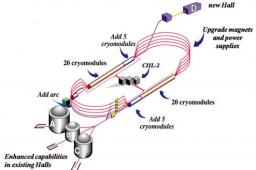A thin cryogenic target for the studies of exotic nuclei
The CHyMENE project (Cible d'Hydrogène Mince pour l'Etude des Noyaux Exotiques - a thin cryogenic target for the studies of exotic nuclei) is part of the instrumentation necessary for the exploitation of the low energy beams (~ 5 to 25 MeV/n), such as SPIRAL2 beams.











